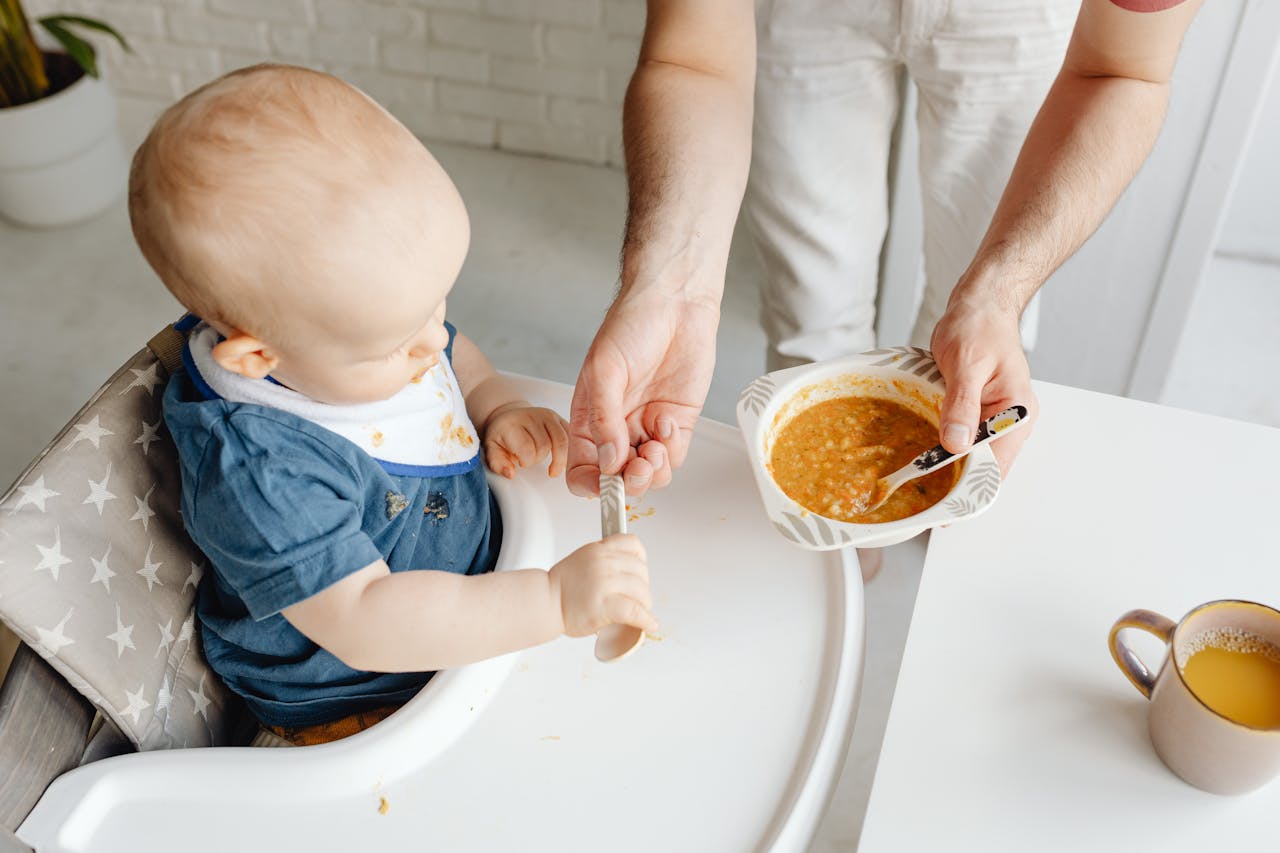Home
Pregnancy & Breastfeeding Tips for New Moms: Preconception, Pumping & Parenting Support
Baby Food Progression: From Purees to Finger Foods

Baby Food Progression: From Purees to Finger Foods
Moms and dads know that when feeding their baby, there has to be a process followed because the last thing you want is for your infant to be fussy or uncomfortable because you’re feeding them the wrong foods. When it comes to the different baby food stages, they’re really very simple to understand and a lot of your decisions will be based on what the baby seems ready for at any given time.
Always Start with Soft Pureed Foods
At four to six months of age, babies can have pureed foods, and it’s best if you stick with a commercial baby food that is specifically made for infants. Start with fruits and vegetables, and only feed them one food per day in the beginning. If the baby reacts well after three days of eating the food, you can move onto another type of food. Eventually, you can add protein such as chicken or beef baby food, but it’s best to start with baby cereal and fruits in the beginning.
You should also keep in mind that babies have to be ready both physically and emotionally to go from only consuming breast milk or formula to eating pureed foods. If you have any questions about your baby’s ability to eat pureed foods, or their interest in it, you should talk to your pediatrician.
Generally, babies’ main source of nutrition for the first year of life comes from breast milk or formula, so if you’d rather wait until they’re a full six months of age, that is perfectly acceptable.
So, when is a baby generally ready to eat table food or finger food? Normally, it’s around eight to nine months of age. At this age, their digestive systems are better able to handle foods besides pureed food, and they’ll also become more interested in it.
Keep in mind, however, that “finger” foods do not include grownup food. Finger foods should still be soft and cut into small pieces so the baby doesn’t choke. You can either cook the food yourself or buy finger food specially made for older babies.
How Do You Know If Your Baby Is Ready?
Transitioning to finger foods isn’t an exact science. If your baby seems disinterested, acts distressed, or starts coughing or shaking their head when you try to feed them soft diced carrots, you can simply wait until they’re older.
While many older babies enjoy at least a few finger foods at eight to nine months of age, some may not show any interest until they’re a year old or even older, and that’s okay. Since breast milk or formula is their main source of nutrition, they really don’t need finger foods to stay healthy.
You should also keep in mind that when babies go from purees to solids such as finger foods, a lot of their like or dislike of the foods will depend on their ability to chew. From seven to eight months until around 11 months, babies begin to chew instinctively, so if you introduce finger foods during this time frame, they are more likely to want to eat it. That being said, the longer you wait to introduce them to finger foods, the harder it sometimes is for them to eat the foods.
You’ll also want to make sure that your baby is able to pick up small items with their fingers. Otherwise, they won’t be able to pick up the food. Another tip to remember is that this is a time for babies to learn about both taste and texture, which is why those commercial dissolvable “puffs” are so good for them. They provide a little texture that the baby will love but they won’t have to chew them a lot because their saliva will make the puffs dissolve in a short period of time.
What Should You Feed Them?
Some of the best finger foods include pieces of banana, diced veggies such as cooked carrots, and Stage 1 foods that can include rice husks, teething wafers, and even baby cheese puffs. If you cook the foods, never add anything like salt or butter because this is unnecessary and besides, the foods themselves are what the baby needs most. Town House crackers and graham crackers are also good for babies to chew. Stay away from Ritz crackers, though, because they are harder to chew.
When you’re introducing textured foods, make sure that they aren’t too hard and break them into small pieces. Babies love textured foods, but you don’t want them to choke on them. If you use a little common sense, these rules should be easy to follow.
Conclusion
Going from pureed baby food to feeding a baby finger or table food isn’t that difficult. Just like feeding them pureed food, it has to be done slowly. Foods such as hot dogs aren’t a good idea because it is very easy for babies to choke on them. If you think about the foods before you give them to the baby, it helps a lot.Share


